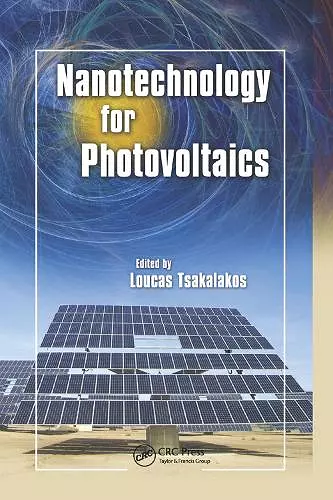Nanotechnology for Photovoltaics
Format:Paperback
Publisher:Taylor & Francis Ltd
Published:21st Oct '19
Currently unavailable, and unfortunately no date known when it will be back
This paperback is available in another edition too:
- Hardback£180.00(9781420076745)

Current concerns regarding greenhouse gas-related environmental effects, energy security, and the rising costs of fossil fuel-based energy has renewed interest in solar energy in general and photovotaics in particular. Exploring state-of-the-art developments from a practical point of view, Nanotechnology for Photovoltaics examines issues in increasing efficiency, decreasing costs, and how these two goals can be achieved in a single photovoltaic device. It provides fundamental background and places research approaches within the proper physical context as related to photovoltaics performance enhancement.
The book reviews the applications of devices and their performance requirements, followed by coverage of thin films and advanced band structure concepts for obtaining efficiencies above the Shockley–Queisser single bandgap efficiency limit of ~31%. The editor and contributors also discuss the basic optical properties of nanostructured materials as related to photovoltaics applications and describes nanoscale optoelectronic device physics related to performance. They then explore recent literature in the application of various classes of nanostructures to photovoltaics. The book covers solar cells based on hybrid organic-inorganic nanocomposites structures, quantum wells, nanowires/tubes, and quantum dots. It also discusses the use of nanoparticles/quantum dots to enhance the performance of conventional solar cells and luminescent solar concentrators.
Each chapter summarizes the historical development for the nanostructure class under consideration, applications beyond photovoltaics, and the major synthetic methods, followed by a critique of leading works that have employed the particular nanostructure type. The book examines the advantages of each nanostructure approach and the remaining technical challenges, with an emphasis on possible future areas of research interest. It concludes with a summary of the major
ISBN: 9780367384357
Dimensions: unknown
Weight: 907g
458 pages